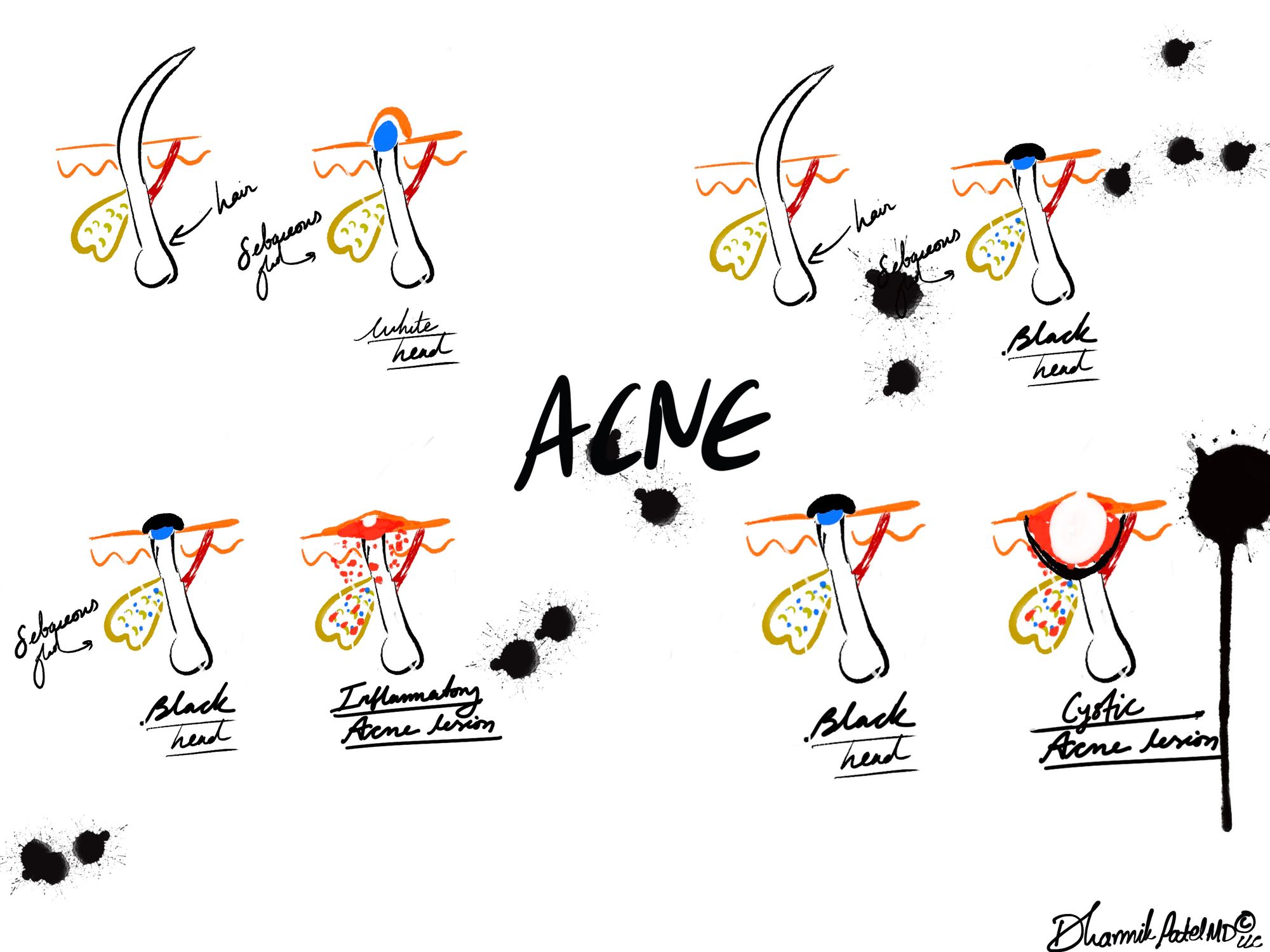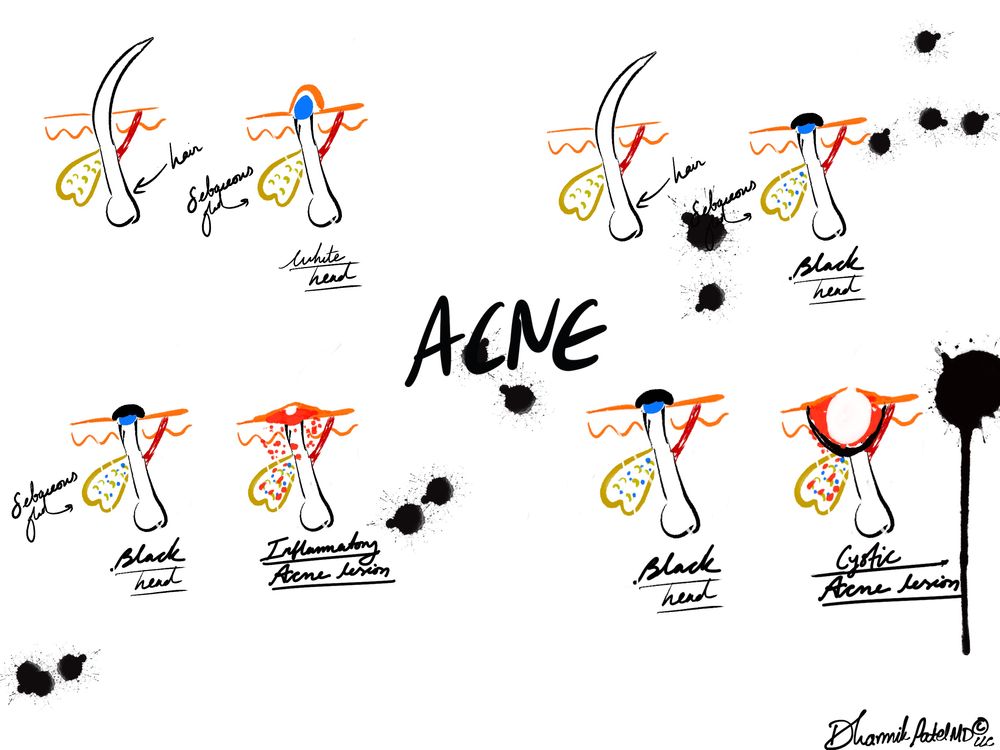Acne - Pathogenesis
Acne, a common skin condition, can prove challenging to treat due to its complex and multifaceted nature. Pathogenesis of acne (development of Acne) is noted below.

Comedogenesis: Acne begins with the overproduction of sebum (from sebaceous glands), an oily substance that lubricates the skin. In individuals prone to acne, excess sebum production can lead to the blockage of hair follicles. This results in the formation of comedones, which are divided into two types: open comedones (blackheads) and closed comedones (whiteheads). Open comedones occur when the hair follicle's opening remains open, allowing the accumulated sebum and dead skin cells to oxidize and darken, giving them their characteristic black appearance. Closed comedones form when the follicle's opening is closed, trapping sebum and causing a white or flesh-colored bump.
Inflammatory Lesions (red bumps with pus): If the comedones rupture or are breached, the trapped sebum, bacteria (cutibacterium acnes), and debris can leak into the surrounding skin, triggering an inflammatory response. This leads to the development of papules (small red bumps) and pustules (red bumps with a white or yellow center). The immune system responds to the bacterial invasion, causing redness, swelling, and tenderness.
Nodules and Cysts: In some cases, the inflammation can become more severe, leading to the formation of larger, deeper lesions such as nodules and cysts. Nodules are painful, solid lumps beneath the skin's surface, while cysts are pus-filled, sac-like structures that can be even more painful and may lead to scarring.
Scarring: Severe and repeated inflammation can damage the surrounding skin tissue, resulting in permanent scars. These scars can be depressions (atrophic scars) or raised areas (hypertrophic scars).
The intricacies of hard-to-treat acne demand a tailored approach, considering factors like skin type, medical history, and lifestyle. Dermatologists also possess the knowledge to manage potential side effects of aggressive treatments, ensuring both efficacy and safety. With their advanced training and access to cutting-edge therapies, dermatologists provide a comprehensive strategy that extends beyond mere symptom management, addressing the root causes of acne and striving for lasting results.

